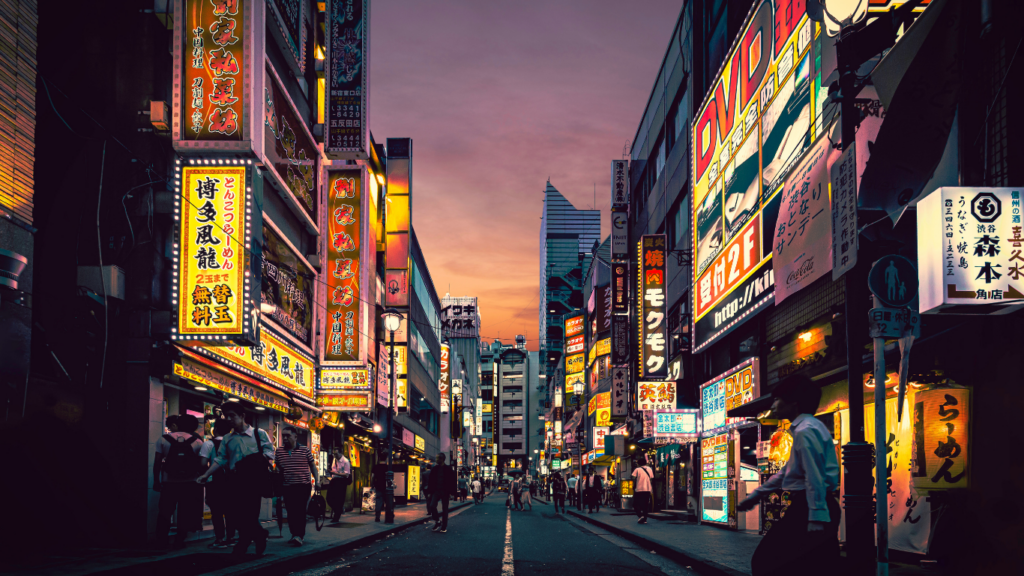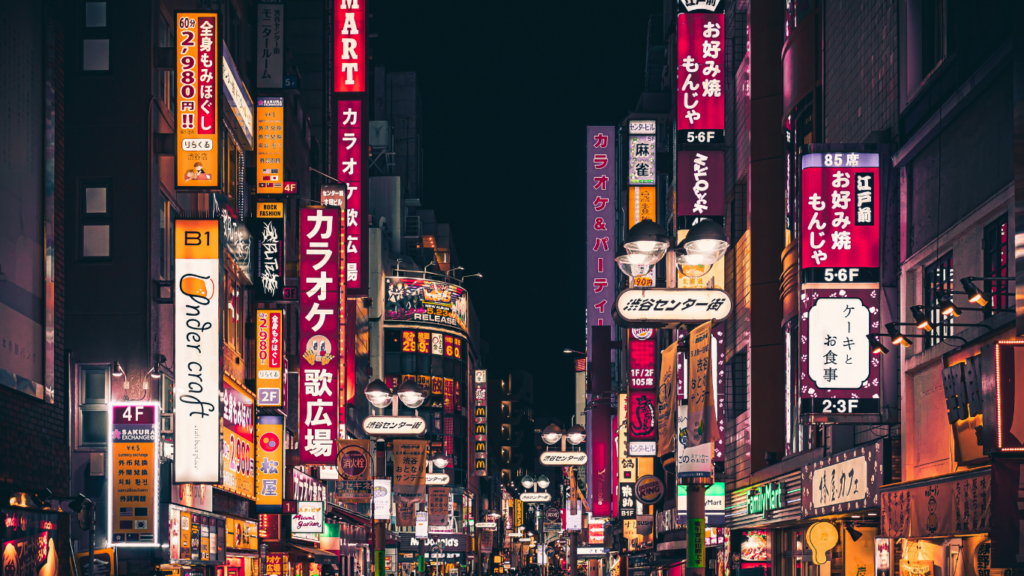Tokyo’s a vibrant city where ancient traditions meet cutting-edge modernity. As a local, I’ve explored its hidden gems and bustling streets, uncovering the rich culture and mouthwatering cuisine that make this metropolis unique.
From serene temples to lively markets, there’s so much to experience beyond the usual tourist spots.
Overview of Tokyo’s Unique Culture
Tokyo’s culture represents a dynamic fusion of history and innovation. As I explore the city’s neighborhoods, I constantly encounter the fascinating interplay between ancient customs and contemporary lifestyles.
Historical Influences
Tokyo’s rich history shapes its cultural landscape. The city’s origins date back to the Edo period (1603-1868) when it became Japan’s political center. Temples like Sensō-ji in Asakusa and the serene Meiji Shrine exemplify traditional architecture and spiritual significance.
Festivals, such as Sanja Matsuri, celebrate these historical roots, showcasing traditional music, dance, and costumes that draw locals and tourists alike. The preservation of these cultural elements underscores the importance of heritage in modern Tokyo.
Modern Cultural Trends
Tokyo’s cultural scene continuously evolves, embracing global influences while maintaining its uniqueness. Contemporary art, fashion, and technology flourish in neighborhoods like Harajuku and Shibuya.
The vibrant street fashion reflects individual expression and creativity, often drawing inspiration from the past. Additionally, technology integrates seamlessly into daily life, evident in the rise of digital art exhibits and interactive installations.
Tokyo’s modern cultural trends highlight its adaptive spirit, making it a hub for innovation and creativity in the global arena.
Culinary Delights of Tokyo
Tokyo’s culinary scene offers an enticing mix of traditional and innovative flavors. Each dish tells a story, reflecting the city’s rich heritage and modern influences.
Traditional Japanese Cuisine
Tokyo’s traditional cuisine, known as washoku, emphasizes seasonal ingredients and presentation. Popular dishes include sushi, sashimi, and tempura. Sushi, with its delicate rice and fresh fish, can be experienced at renowned establishments like Tsukiji Outer Market or Sukiyabashi Jiro.
Sashimi, served with wasabi and soy sauce, showcases the skill of chefs in preparing the freshest seafood. Noodle dishes like ramen and soba are staples. Ramen shops, particularly in areas like Shinjuku, offer regional varieties—tonkotsu (pork broth) and shoyu (soy sauce).
Soba noodles, made from buckwheat, can be enjoyed cold with dipping sauce or hot in soup, found in restaurants across the city. Don’t overlook kaiseki, a traditional multi-course meal. Kaiseki highlights seasonal ingredients and culinary art. I’m drawn to restaurants like Kikunoi, where the presentation and flavors create a memorable dining experience.
Modern Fusion and International Flavors
Tokyo embraces modern fusion cuisine, blending international influences with Japanese techniques. Establishments like Tapas Molecular Bar experiment with unique flavor combinations and presentation styles.
Unique dishes, such as sushi burritos, exemplify this culinary innovation. Street food also captures the spirit of fusion. Food stalls in neighborhoods like Harajuku offer delectable options, from crepes filled with fresh fruits to savory takoyaki (octopus balls).
These treats reflect Tokyo’s adaptability and creativity. International dining scenes thrive here, showcasing cuisine from around the world. In areas like Roppongi, one can find everything from Italian to Indian, with Michelin-starred establishments available.
Dining in Tokyo becomes an exploration of global tastes while rooted in Japanese culinary principles.
Must-Visit Neighborhoods
Tokyo’s neighborhoods each offer unique experiences that capture the city’s essence. Here’s a closer look at some must-visit areas.
Shibuya: The Heart of Youth Culture
Shibuya pulses with youthful energy, symbolized by the iconic Shibuya Crossing, where thousands cross each minute. Shopping options abound at Shibuya 109, featuring trendy fashion boutiques.
Notable nightlife spots like Hachiko Square and nearby izakayas highlight the social scene. I often enjoy exploring the vibrant street art and pop culture, making Shibuya an essential stop for anyone wanting to experience Tokyo’s dynamic youth culture.
Asakusa: A Blend of Tradition and Modernity
Asakusa showcases a captivating mix of history and modern life. Sensō-ji, the oldest temple in Tokyo, attracts visitors with its stunning architecture and vibrant Nakamise Street, lined with traditional snack shops.
Local artisans offer unique crafts that reflect Japan’s rich heritage. I appreciate wandering the quieter streets, where traditional ryokan and tea houses coexist with contemporary cafes and shops, illustrating Tokyo’s seamless fusion of the past and present.
Akihabara: The Electric Town
Akihabara stands as a mecca for anime and technology enthusiasts. The streets are filled with countless electronics shops, gaming centers, and manga stores. I often visit themed cafes, offering immersive experiences that celebrate Japanese pop culture.
Akihabara’s unending energy and vibrant atmosphere make it a must-see, especially for fans of otaku culture, ensuring an unforgettable exploration of Japan’s fascination with entertainment and innovation.
Tips for Navigating Tokyo
Navigating Tokyo can seem daunting at first, but with some essential tips, getting around becomes straightforward. I’ve learned a few key concepts that make exploration enjoyable and efficient.
Public Transport Essentials
Tokyo’s public transport system is among the best in the world. I rely on trains and subways, which provide extensive coverage across the city. The Japan Rail (JR) lines and Tokyo Metro are essential for quick travel.
- Purchase a Suica or Pasmo card: These rechargeable cards simplify fare payment and eliminate the need for individual tickets. I often use them for trains, subways, and even vending machines.
- Check train schedules: Apps like Google Maps and Hyperdia offer real-time updates on train schedules and routes. I find these tools invaluable, as they indicate platform numbers and transfer options.
- Avoid peak hours: Riding during rush hours, typically from 7:30 AM to 9:30 AM and 5 PM to 7 PM, can be overwhelming. I prefer to travel outside these hours for a more comfortable experience.
- Remember the stations: Some stations, like Shinjuku and Shibuya, can be quite large and confusing. Familiarizing myself with station layouts ahead of time helps me navigate easily.
Language and Communication
Tokyo’s primary language is Japanese. Though many locals understand basic English, fluency varies. I’ve found a few communication tips that make interactions smoother.
- Learn basic phrases: Knowledge of simple Japanese phrases, like “arigatou” (thank you) and “sumimasen” (excuse me), goes a long way in building rapport with locals.
- Use translation apps: Applications like Google Translate offer text and voice translation options. During my travels, these apps have been handy for restaurant menus or asking directions.
- Point and gesture: Gestures and pointing at items can be effective when language barriers arise. I’ve successfully used this method in shops and restaurants.
- Carry a phrasebook: A Japanese phrasebook can prove useful for emergencies or communication needs. Having written phrases at hand often alleviates misunderstandings.




